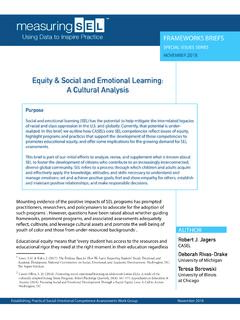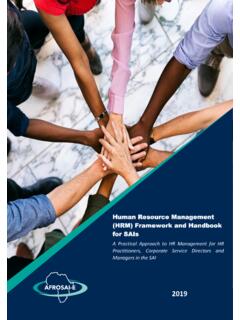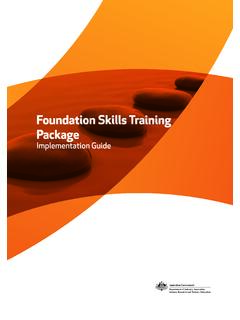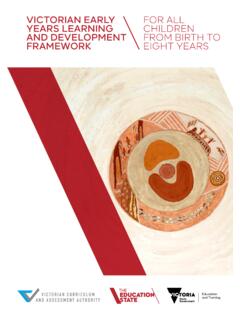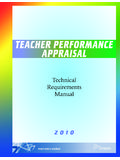Transcription of SEL Competency Assessments
1 Choosing and Using SEL Competency Assessments : AUTHORS. What Schools and Districts Jeremy J. Taylor CASEL. Need to Know Katie Buckley TRANSFORMING EDUCATION. Laura S. Hamilton RAND. Brian M. Stecher RAND. Lindsay Read CASEL. Jonathan Schweig RAND. NOVEMBER 2018. Contents ACKNOWLEDGEMENTS 3. ABOUT THIS DOCUMENT 4. WHAT ARE SEL COMPETENCIES? 5. WHY ASSESS SEL COMPETENCIES? 6. CONSIDERATIONS FOR SEL Competency assessment 7. HOW TO ASSESS SEL COMPETENCIES 11. PREPARE 11. STEP 1: FRAME THE OVERALL SEL EFFORT 11. STEP 2: PLAN THE ROLE OF assessment 13. STEP 3: CHOOSE THE SEL COMPETENCIES TO ASSESS 14. SELECT 15. STEP 4: REVIEW THE assessment OPTIONS 15. STEP 5: SELECT assessment TOOL(S) 18. USE 19. STEP 6: IMPLEMENT assessment 19. STEP 7: USE DATA 20. CONCLUDING REMARKS 27. REFERENCES 28.
2 APPENDIX A: UNDERSTANDING VALIDITY AND RELIABILITY 31. APPENDIX B: DEVELOPING SEL FORMATIVE Assessments TO GUIDE INSTRUCTION IN CLASSROOMS 35. APPENDIX C: NAPERVILLE COMMUNITY SCHOOL DISTRICT 203 (D203) FORMATIVE assessment RUBRIC 37. ADDITIONAL RESOURCES 38. CHOOSING AND USING SEL Competency Assessments 2. Acknowledgements The assessment Work Group and Rand Corporation would like to acknowledge the many individuals and groups who contributed to this report, including the following: The assessment Work Group members, in particular, Dale Blyth, and members of the assessment Guide subgroup: Craig Bailey, Laura Davidson, Susanne Denham, Ben Hayes, Eric Moore, Michelle Steagall, and Marty West. Our reviewers: Laura Davidson Angela Duckworth, Camille Farrington, Heather Hirsch, Michael Rodriguez, David Yeager, and Nick Yoder.
3 The contributors to the Minnesota Department of Education Social and Emotional Learning assessment Guidance, from which this report received inspiration. CASEL staff: Kay Daly, Carolina Herrera, Stephanie Itano, Rob Jagers, Rebecca Lectura, Shari Noland, Jordan Trejo, and Roger Weissberg. We would also like to thank the generous funders of the Funders Collaborative for Innovative Measurement for their support of this report, the AWG SEL assessment Guide and the Rand assessment Finder. CHOOSING AND USING SEL Competency Assessments 3. About this document This document was jointly developed by the assessment Work Group (AWG) and researchers from the RAND. Corporation's assessment Finder project. Its purpose is to provide school and district leaders and implementation teams with guidance on how to choose and use social and emotional learning (SEL) Competency Assessments .
4 It discusses the benefits and challenges of measuring SEL competencies, what to consider when choosing an SEL. Competency assessment , and guidance for using SEL Competency data in practice. The information found here serves as a complement to two online resources: The AWG's SEL assessment Guide offers guidance to educators on how to select and use Assessments of students' SEL competencies, specifically interpersonal and intrapersonal knowledge, skills, attitudes, and mindsets. The Guide focuses on measures currently used in practice and will expand over time as more are nominated. The RAND assessment Finder lists more than 200 Assessments of interpersonal, intrapersonal, and higher-order cognitive competencies. The assessment Finder enables practitioners, researchers, and policymakers to explore what Assessments are available and obtain key information about what they are designed to measure, how they operate, what demands they place on students and teachers, and what kinds of uses their scores support1.
5 These resources respond to a need from educators for more information about assessing students' SEL. competencies. A recent nationally representative survey of more than 800 school principals revealed2 : Near unanimous commitment to SEL (95% of principals). Even stronger belief that SEL competencies are teachable (99% of principals). However, these leaders were far less clear about how to approach the assessment of students' SEL competencies: Less than a quarter (17%) reported they were aware of which Assessments of students' SEL. competencies were available to use. Just as few (16%) believed their teachers knew how to use data from these measures. In this document, we hope to provide information to help educators determine which available SEL Competency Assessments are right for them and how they can best use data from those Assessments .
6 With nearly 140. different SEL frameworks in existence, it is not feasible to offer customized guidance on each specific framework or its Instead, this document offers recommendations and best practices that apply across SEL. frameworks and competencies, rather than make judgments about particular frameworks. More work on the definitions of and relationships among competencies is underway by Stephanie Jones and the Harvard Taxonomy project. See also the series of useful briefs about SEL frameworks the AWG is producing. 1. For ease of communication, we generally refer to SEL competencies throughout this document, though the guidance is equally applicable to the higher-order cognitive category included in the RAND tool. 2. DePaoli, Atwell, & Bridgeland, 2017. 3. Berg, Osher, Same, Nolan, Benson, & Jacobs, (2017).
7 Identifying, Defining, and Measuring Social and Emotional Competencies. CHOOSING AND USING SEL Competency Assessments 4. What are SEL competencies? SEL competencies are essential knowledge, skills, attitudes, and mindsets that individuals need to succeed in life. SEL competencies are the product of social and emotional learning (SEL), which can be defined as the process through which schools and districts implement practices and policies that allow children and adults to acquire and effectively apply those competencies. Specifically, SEL competencies and the ability to apply them to everyday life are developed through: A supportive learning environment. Positive interactions with adults and peers. Explicit SEL instruction. The integration of SEL into academic instruction. SEL can take place in a number of settings.
8 They include the home, schools, and after-school programs. When schools are committed to SEL, it shapes their partnerships with families and community members, highlighting engagement, trust, and collaboration. SEL is developmental. Social and emotional learning occurs across various stages in an individual's life. At certain developmental stages, some competencies are more likely to develop than others. For example, self-management skills tend to develop in preschool and elementary school, while mindsets and values tend to develop during the middle school and high school years, respectively4 (see the Developmental aspect of SEL in the Considerations for SEL Competency assessment section). SEL competencies are often organized according to those that are intrapersonal and those that are interpersonal.
9 Intrapersonal competencies refer to ways of dealing with oneself, including ones' thoughts and emotions. These are the awareness, beliefs, and skills directed and applied inwardly. Interpersonal competencies refer to the knowledge, skills, and attitudes directed toward other people, institutions, or social structures. In addition, these competencies can also be organized according to whether they refer to one's awareness or one's skills. The matrix in Table 1 uses these two axes (Intrapersonal/interpersonal and awareness/skill) to represent the range of SEL competencies discussed in this guide. Table 1. Categories and Examples of SEL competencies Interpersonal: Knowledge, skills, and Intrapersonal: Knowledge, Skills, and attitudes directed toward other people, attitudes directed toward oneself institutions, or social structures Awareness: Mindsets, knowledge, Intrapersonal Awareness ( , growth Interpersonal Awareness ( , empathy, beliefs, or understandings mindset, self-efficacy) social awareness).
10 Interpersonal Skills ( , social Skills: Learned abilities to carry out a Intrapersonal Skills ( , self-control, perspective taking; collaborative task with intended results or goals goal-setting, stress management). problem-solving). 4. Nagaoka, Farrington, Ehrlich, & Heath, 2015. CHOOSING AND USING SEL Competency Assessments 5. Why assess SEL competencies? assessment is a cornerstone of effective instruction and student learning5. This is true for SEL, just as it is in academic disciplines such as mathematics and science. In fact, a recent PDK poll indicated that the vast majority of Americans agree that measurement of SEL competencies is important, with 84% of a nationally representative sample saying they believe schools should assess students' interpersonal skills6. Student SEL Competency assessment provides a range of benefits for educators at multiple levels.

